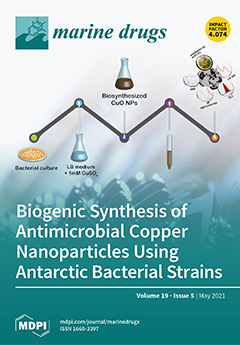α-Neoagarobiose (NAB)/neoagarooligosaccharide (NAO) hydrolase plays an important role as an exo-acting 3,6-anhydro-α-(1,3)-L-galactosidase in agarose utilization. Agarose is an abundant polysaccharide found in red seaweeds, comprising 3,6-anhydro-L-galactose (AHG) and D-galactose residues. Unlike agarose degradation, which has been reported in marine microbes, recent metagenomic analysis
[...] Read more.
α-Neoagarobiose (NAB)/neoagarooligosaccharide (NAO) hydrolase plays an important role as an exo-acting 3,6-anhydro-α-(1,3)-L-galactosidase in agarose utilization. Agarose is an abundant polysaccharide found in red seaweeds, comprising 3,6-anhydro-L-galactose (AHG) and D-galactose residues. Unlike agarose degradation, which has been reported in marine microbes, recent metagenomic analysis of
Bacteroides plebeius, a human gut bacterium, revealed the presence of genes encoding enzymes involved in agarose degradation, including α-NAB/NAO hydrolase. Among the agarolytic enzymes,
BpGH117 has been partially characterized. Here, we characterized the exo-acting α-NAB/NAO hydrolase
BpGH117, originating from
B. plebeius. The optimal temperature and pH for His-tagged
BpGH117 activity were 35 °C and 9.0, respectively, indicative of its unique origin. His-tagged
BpGH117 was thermostable up to 35 °C, and the enzyme activity was maintained at 80% of the initial activity at a pre-incubation temperature of 40 °C for 120 min.
Km and
Vmax values for NAB were 30.22 mM and 54.84 U/mg, respectively, and
kcat/Km was 2.65 s
−1 mM
−1. These results suggest that His-tagged
BpGH117 can be used for producing bioactive products such as AHG and agarotriose from agarose efficiently.
Full article






